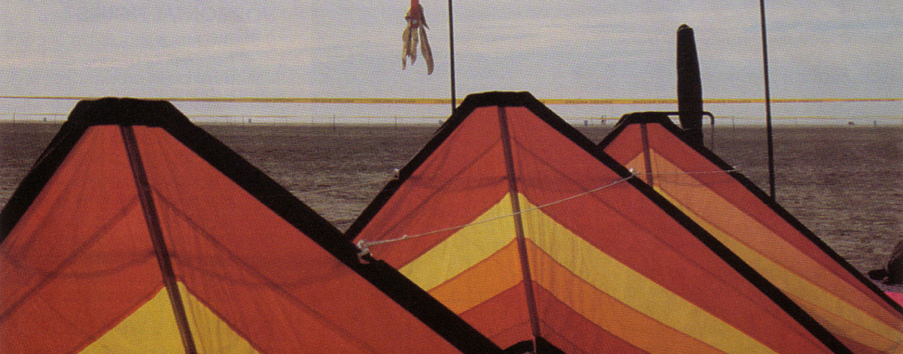The American Kite Magazine National Stunt Kite Circuit
The American Kite Magazine National Stunt Kite Standings system was proposed by American Kite magazine, and publisher, editor Daniel Prentice in the preimer issue of AKM magazines the summer in 1988! (pg. 37 Vol 1 #1) This was the first issue published by this new magazine!
This “AKM circuit” and the awarding of National competition points and tabulating a national ranking system predated the AKA’s Conference system by 5 years! The original discussions began as far back as 1986 when the Kite Trade Association and Daniel Prentice (member of the KTA) discussed what was called, “The KTA Pro-Am Kite Circuit” In 1986 there was not an “Official” stunt kite competitions rules book in existence.
Fran Gramkowski, also a member of the KTA headed a committee that included Bevan Brown (at the time “First Gentleman” to the ’86 AKA Prez Margo Brown) and other kitefliers to formulate a book and figure out how to certify judges! Gramkowski eventually “copyrighted” a stunt kite rules book, that had been prepared with the assistance of East Coast kitefliers. The AKA took several years after that to create and certify their own version of the rules, based on those original copyrighted rules of 1987.
As mentioned in an earlier post there was no AKA Conference system until 1993. So, I think the best way to describe the goal in creating the AKM system would be to quote, in part, directly from the AKM article in Vol 1 #2 1988 issue (page 45 for you fact checkers).
“Single-line kitefliers have their kites judged at national competitions, such as the AKA convention, and receive appropriate recognition for their work. We support this practice.
Stunt kitefliers, however, are judged on performance, and we believe it is inaccurate to declare a na- tional champion based on one day of flying. Likewise, since stunt flyers often travel to several organized competitions annually, we believe it is more logical to declare a national champ based on overall performance.”
The procedure the AKM employed was based on a list of recognized events. These events were classi- fied as either regional or national. That first “season” a list of already established stunt kite events were given national status. Regional events could become “national” events after fulfilling a set of requirements, set by AKM (one of which was to host the event for more then one year!).
Ranking points were awarded at these two kinds of events on a system based on the term “Pro” flier and this is where the confusion came started on the flying fields of the USA.
I’ll quote AKM directly to define what the term “Pro Kiteflier” meant, ” A “pro” flier is defined as an individual who has placed first to third in a major stunt kite competition in the last two years, or a team in which at least 50 percent of its current members have done so. American Kite reserves the right to make all final decisions” ( pg. 45 Vol. 1 #2 AKM)
This meant that depending on whether you were a “pro” or not, and took 1st – 3rd at a recognized event you could earn anywhere from 1 to 12 points. The AKA’s Nationals were also included as a “recognized” event but received a much higher point spread from 35 to 7 points for 1st through 3rd. the magazine printed a chart explaining the “Points system”
If this all seems confusing maybe I should quote the supplied example directly from AKM : (Example: Two pro flyers compete in an event with non-pros and place 1st and 4th. Scorings would be 1st = 10; 2nd = 8; 3rd = 6; 5th = 1) Simple! Right??
At the very end of this introductory article in AKM was the lines, ” American Kite will present 1988 National Champion trophies and prizes at this year’s AKA convention in Chicago, September 29 to October 1″ AND that Chicago convention – “Windy City ’88” was where I got directly involved with Daniel Prentice and the newly formed American Kite National Circuit.

